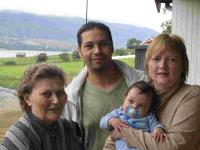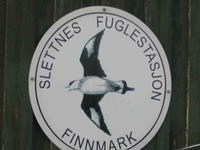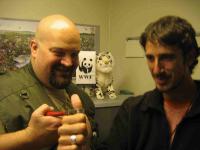
When the slow ferry left in Tallinn, the Estonian Capital, I hastened my pace trough the intrincated network of alleys of the medieval town. I was technically in Eastern Europe. Talking about the ex Socialist Republics gets complicated. To most of us these countries are indistinguishable.
.
Estonia, Latvia and Lithuania. The three countries share in a high degree its cultural background. In medieval times the area was under strong germanic influence. The Teutonic Knights, a religious – militar order retreating from Holy Land, found in the paganism of Lithuania (last european country to convert to Christianism) an excuse to invade the neighborhood. Part of the Russian Empire, the three countries were passed on into the USSR after a short breath independence in the 20s. They regained their soberanity in 1990. In 2004 the three all togheter joined the European Union, as witnessed by 200,000 Lithuanians living and working in London.
The three countries share, as natural consequence of all prohibition, the phenomena of unmeasured growth. This growth can never be equal for everyone, giving place to weird condensations, last model Mercedes parked among Ladas loaded with peasants and babushkas. In Tallinn, the Estonian capital, glass towers grow like mushrooms, the same to be obsreved in Riga and Vilnius. But set your foot out the city centre and you will find an army of unmantained soviet era appartment blocks, not to talk about great looking and gracefully crumbling 19th century buildings, its stairs arched by uncounted bolchevik and perestroikan paces.. There, in any moment, it seems we are gonna find Raskolnikov flying down the stairs after killing the old woman...

I made it to Riga in the car of a man whose case illustrates the “Baltic proximity”. He was a Lithuanian that was warehouse manager for Coca Cola in Riga and was coming from a business meeting in Estonia... Who better than him to give me a picture of what the people think of themselves. After 300 kms it turned out that the Estonians are the slow going lads, for what they are the target of all jokes, altough their the economy is the one that best resembles a western european one in the area. Average salary here is around 200 euros... Lithuanians (and here the driver talks about himslef) selfportrait themselves as warm (“italians of the north”) ans somewhat unproductive by Estonian standards. In sports, Lithuanian is basketball country, Latvia dies for ice hockey while Estonians are to slow for any ball sport. Other issue that come to light is the independence process. It was not an easy process for everybody. While in Lithuania everybody got the citizenship of the new country right away, in Latvia the goverment denied citizenship to all the population of Russian ascendance, no less than 40% of the pie. Thus, in Latvia, there is a subworld of second class citizens...

On my way to Vilnius I decided to take distance from highways and proceed on minor roads. The change was greater than I had forecasted. Automaticvally i found myself in unpaved roads, where cars were a couple of decades older than the european average. Cool. The towns, ringed by a mist of abbandonment, didn’t qualify to be picturesque. Ocassionaly horse drawn karts mixed with cars. And there i shed a tear. Everything was Argentinian enough to spark my homesickness. A German that gave me a lift put it this way: “It is a pitty that these countries are slowly loosing their culture (he meant poverty). In 10 years everybody is gonna have a new car and everything will look just like any other European country.” He doesn’t know that the people here want to live like in an average European country.


I made it to Riga in the car of a man whose case illustrates the “Baltic proximity”. He was a Lithuanian that was warehouse manager for Coca Cola in Riga and was coming from a business meeting in Estonia... Who better than him to give me a picture of what the people think of themselves. After 300 kms it turned out that the Estonians are the slow going lads, for what they are the target of all jokes, altough their the economy is the one that best resembles a western european one in the area. Average salary here is around 200 euros... Lithuanians (and here the driver talks about himslef) selfportrait themselves as warm (“italians of the north”) ans somewhat unproductive by Estonian standards. In sports, Lithuanian is basketball country, Latvia dies for ice hockey while Estonians are to slow for any ball sport. Other issue that come to light is the independence process. It was not an easy process for everybody. While in Lithuania everybody got the citizenship of the new country right away, in Latvia the goverment denied citizenship to all the population of Russian ascendance, no less than 40% of the pie. Thus, in Latvia, there is a subworld of second class citizens...

On my way to Vilnius I decided to take distance from highways and proceed on minor roads. The change was greater than I had forecasted. Automaticvally i found myself in unpaved roads, where cars were a couple of decades older than the european average. Cool. The towns, ringed by a mist of abbandonment, didn’t qualify to be picturesque. Ocassionaly horse drawn karts mixed with cars. And there i shed a tear. Everything was Argentinian enough to spark my homesickness. A German that gave me a lift put it this way: “It is a pitty that these countries are slowly loosing their culture (he meant poverty). In 10 years everybody is gonna have a new car and everything will look just like any other European country.” He doesn’t know that the people here want to live like in an average European country.

Afterwards, a man stoppped me as I was walking a minor road swearing me that a friend of him could take me to next town. 10 minutes later his friend showed up in a scooter... Mi backpack caused the scooter’s suspension to bend in a way that the men changed their minds. It is getting dark. I see two kids who were back from fishing in the river, and were holding a bucket full of small fish. They are cute and I take a picture of them. When their mother appears I show her the picture of her kids. She is moved, and proud, says that I can camp in their garden, under some apple trees. Next day I made it to Vilnius, and got to know that mi italian passport is delayed because the Consulate in Argentina hasn’t sent the approval, confirming that I am not Bin Laden. Ragazzi, my steps have found an anchor in you. The passport...that chassis of the soul...


















